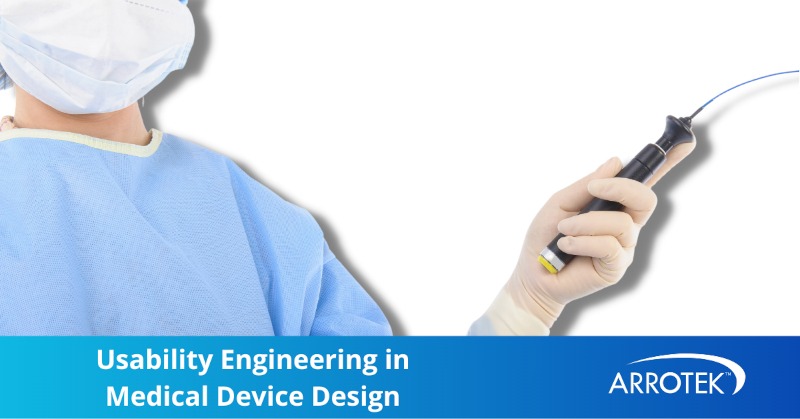
Usability engineering is a common concept in many areas of product design, but its importance is elevated in medical device product design because of issues of safety and effectiveness.
In fact, the importance of usability engineering is increasing as medical devices become more complex and smarter. Medical devices are also being used in a growing number of situations and to treat an ever-widening range of conditions. Microcatheter technologies are a good example, given the advances that are being made in neurovascular microcatheters.
What is usability engineering in medical device design, and what does it mean for your design project or the idea you have for a new medical device product?
Principles of Usability Engineering in Medical Device Design
Usability engineering in medical device design is concerned with:
- The ability of users to interact easily with the device, i.e., using the device should be as intuitive as possible
- The ability of users to interact and use the device error-free
- The device should work the way the clinician or user expects it to work
When assessing the above points, medical device design engineers must account for a number of factors, including the intended use of the medical device, who will be using it, and where it will be used.
Also, it’s not about ideal world scenarios where you have well-trained and experienced users in perfect conditions. Instead, usability engineering is about real-world risks and real-world usability issues related to the design of the product. The objective is to resolve those risks and usability issues at the design stage.
Overview of Usability Engineering Considerations
When going through the usability engineering process, design engineers will consider multiple aspects of the device and how it is used, including:
- The information that users get from the packaging, labels, and instructions
- The information that users get from the device itself
- How users interpret the information they have received and how they use the information to make decisions
- How the user uses the device
- How the device receives and reacts to the user’s actions
Why Usability Engineering Is Important
When designing products in other industries, usability engineering is often focused on improving the user experience to help achieve commercial success. However, in medical device design, there are additional, very high-level considerations that usability engineering addresses.
First, there is patient safety, as patient safety can be compromised in some situations if poor usability design leads to the incorrect use of a medical device.
Then there is the issue of the device not working as it should because it is not being used properly. For example, a drug delivery device not delivering the drugs at all or failing to deliver drugs to the target treatment location.
There are other factors to consider, too, such as efficiency of operation. In other words, a medical device that is not user-friendly could result in procedures taking longer than necessary.
Regulations and Standards
Regulators publish guidance and information on usability engineering and related topics, and there are commonly recognised international standards:
- FDA – the FDA has a very specific focus on usability that has been refined and updated over decades. Much of this information is covered in the FDA-published guidance document Applying Human Factors and Usability Engineering to Optimize Medical Device Design. This guidance covers device users, use environments, and the user interface, as well as testing, risk mitigation, and validation. A usability engineering report is required to obtain approval from the FDA for your medical device.
- EU MDR – the question of usability is included in the Essential Safety and Performance Requirements section of the EU MDR as well as in other parts of the regulations. This isn’t as specific or tailored to usability engineering when compared to the FDA approach, however the focus of the EU MDR is the same, i.e., reducing the risks that come from the incorrect use of medical devices.
- IEC 62366-1 – this is an international standard covering usability requirements in medical device design. The standard is often used as a benchmark for regulatory compliance across multiple jurisdictions, i.e., with both the FDA and European regulators. The standard outlines a usability engineering process with an emphasis on risk mitigation and documentation.
What Usability Engineering Means for Your Medical Device Product
Your design and development partner will take the lead in the usability engineering process, looking after most of the steps, including ensuring proper documentation standards are being met.
That said, you shouldn’t underestimate the importance of usability engineering, given the role it plays in patient safety, compliance, and commercialisation.
It also influences all stages of the design process, from concept development to quality management to design for manufacturing to the production of your regulatory approved product. Therefore, working with a partner that has usability engineering experience is essential.

